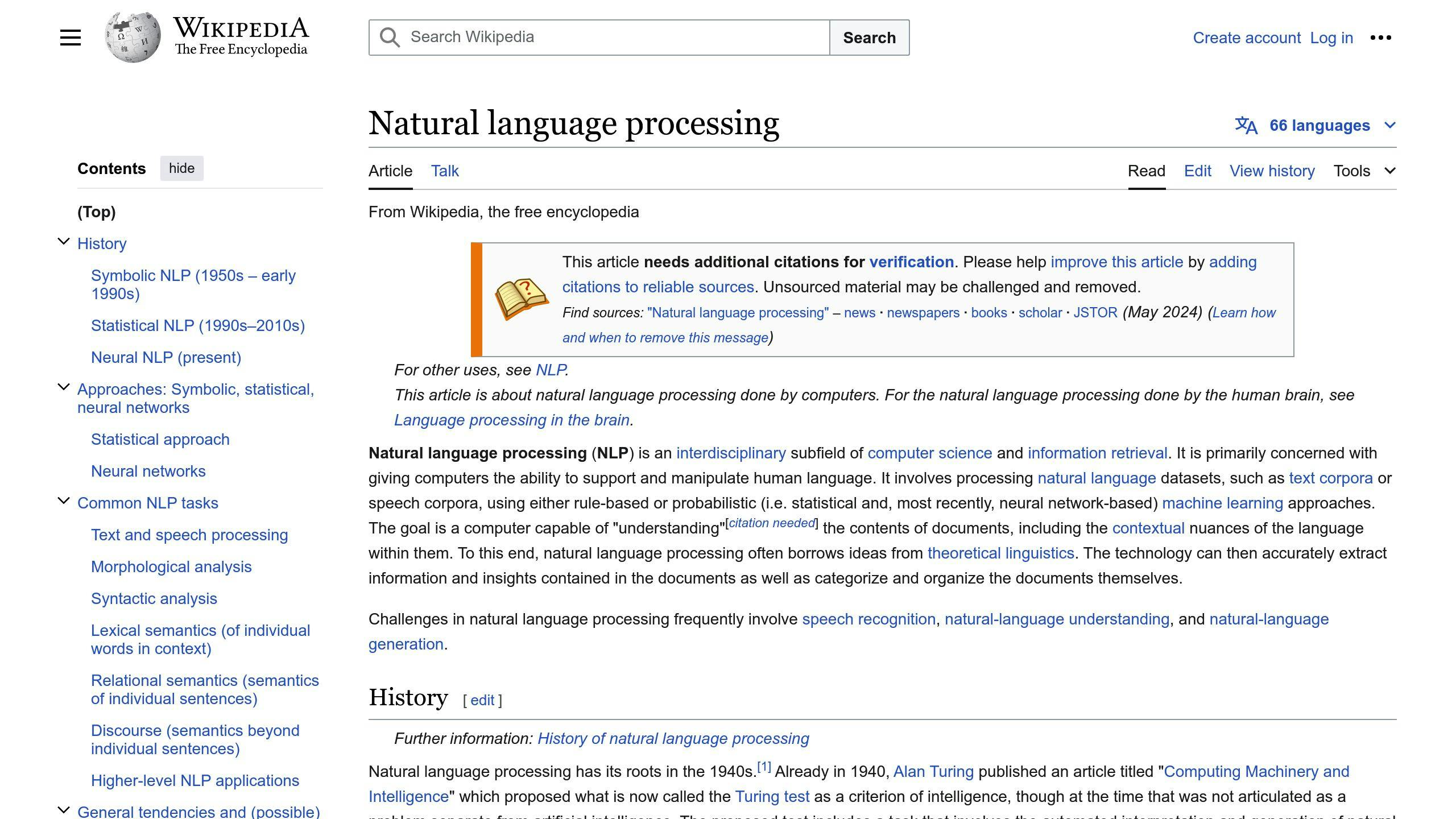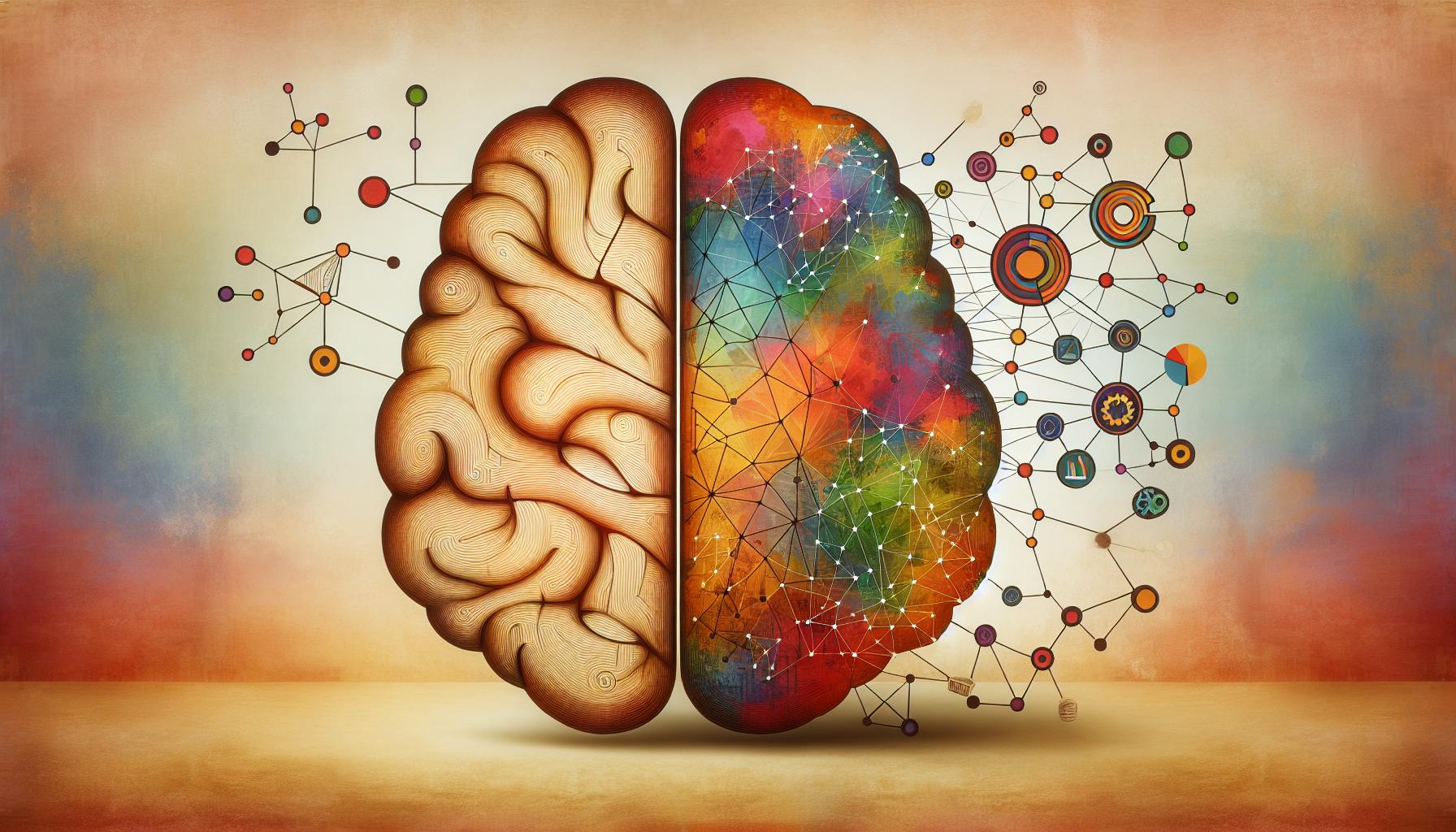Multilingual chatbots allow businesses to communicate with customers in their native languages, providing a seamless and personalized experience. By understanding and responding to queries in various languages, these AI-powered tools help companies:
- Reach a Global Audience: Break down language barriers to attract and retain customers worldwide.
- Improve Customer Satisfaction: Offer quick, accurate support in users' preferred languages, boosting loyalty.
- Reduce Costs: Save on hiring multilingual support staff by automating conversations 24/7.
To build an effective multilingual chatbot, you need:
- Natural Language Processing (NLP) capabilities
- Language detection and translation services
- Multilingual content management
- Language-specific conversational flows
- Thorough testing with native speakers
Key steps include:
- Choose the Right Platform: Select one with robust multilingual support, language detection, translation, and scalability.
- Implement Language Services: Integrate tools to detect users' languages and provide accurate translations.
- Design Language-Specific Dialogues: Create tailored conversations for each language, considering cultural nuances.
- Test and Improve Continuously: Involve native speakers, monitor metrics, and use feedback to enhance the chatbot.
By following best practices and leveraging future innovations like advanced NLP and AI language generation, businesses can deliver exceptional multilingual customer experiences.
Related video from YouTube
Benefits of Multilingual Chatbots
Multilingual chatbots bring many advantages that can improve customer service, reach more people, and streamline business processes.
Better Customer Experience
When customers can chat in their own language, they feel more at ease and understood. This boosts satisfaction as they get quick answers and solutions. Chatbots can offer personalized help, making customers feel valued and loyal to the brand.
Reach More Customers Globally
Businesses today serve a global market with diverse languages. Multilingual chatbots help companies connect with a wider audience by breaking language barriers. This can attract and keep customers from different regions, growing the customer base and revenue.
Cost Savings vs. Human Support
Using multilingual chatbots can cut costs related to hiring and training staff who speak multiple languages. Chatbots can handle many conversations at once, 24/7, without needing human help. This saves money that can be used elsewhere in the business.
Competitive Edge
Offering support in multiple languages sets businesses apart from competitors. It attracts customers from various linguistic backgrounds, helping businesses stand out and maintain a strong online presence.
Boost Customer Loyalty
Multilingual chatbots help create a positive brand image by offering efficient and personalized support in customers' native languages. This increases satisfaction and loyalty, as customers feel valued and understood. Happy customers are more likely to return and recommend the business to others.
Prerequisites for Building Multilingual Chatbots
Before creating a multilingual chatbot, it's important to know the key components and steps needed for success. Here, we'll outline what you need to build a chatbot that can talk to users in different languages.
Understanding Natural Language Processing

Natural Language Processing (NLP) helps chatbots understand and process human language. This includes understanding slang, idioms, and regional phrases. To build a good multilingual chatbot, you need to know how NLP works and how to use it in your chatbot.
Choosing Language Services
Picking the right language detection and translation services is crucial. You need services that can accurately detect the user's language and provide good translations. Consider factors like language coverage, accuracy, and speed when choosing these services.
Managing Multilingual Content
Managing content in multiple languages is key. You need to ensure that content is consistent and accurate across all languages. This includes creating language-specific content, managing translations, and keeping content up-to-date.
Designing Language-Specific Flows
Creating language-specific conversational flows is important. You need to design flows for each language, considering local phrases and differences. This ensures the chatbot communicates well with users in each language.
Thorough Testing
Testing is critical to make sure the chatbot works well. You need to test the chatbot with users who speak different languages, ensuring it can handle language variations, accents, and dialects. This includes testing language detection, translation, and response generation.
Choosing the Right Platform
When building a multilingual chatbot, selecting the right platform is key. The platform should support multiple languages, have good language detection and translation features, and be scalable and easy to maintain.
Evaluating Multilingual Support
When looking at chatbot platforms, check their support for multiple languages. Look for platforms with built-in language detection and translation or those that can connect with external language services. Make sure the platform can handle the languages you need and has a good accuracy record.
Language Features
Key language features to consider:
| Feature | Description |
|---|---|
| Language Detection | Can the platform accurately detect the user's language? |
| Translation | Does the platform offer built-in translation or integrate with external services? |
| Language Support | Does the platform support the languages you want to offer? |
| Regional Differences | Can the platform handle regional differences in language? |
Integrating External Services
Check how easy it is to integrate external language services like Google Translate or Microsoft Translator. This can improve the chatbot's language abilities and provide better translations.
Scalability and Maintenance
Consider the platform's ability to grow and be maintained over time. Key factors include:
- Handling more traffic and user interactions
- Updating language models and dictionaries
- Managing multilingual content and translations
Implementing Language Detection and Translation
Implementing language detection and translation is key to building a multilingual chatbot. This section will guide you through integrating these services into your chatbot.
Detecting User Language
Detecting the user's language is the first step. Here are some methods:
- IP-based detection: Uses the user's IP address to guess their language. It's not always accurate but can be a good start.
- Browser settings: Many browsers have language preferences that can be used.
- Language selection: Let users choose their language. It's simple and effective.
- Machine learning algorithms: Advanced algorithms can detect the user's language based on their input.
Integrating Translation Services
Once the user's language is detected, the chatbot needs to use a translation service to respond in that language. Here are some options:
| Service | Description |
|---|---|
| Google Translate | Popular service with many languages. |
| Microsoft Translator | Another popular service with many languages. |
| DeepL | Neural machine translation with high accuracy. |
Ensuring Accurate Translations
Accurate translations are crucial for a good user experience. Here are some tips:
- Use high-quality services: Choose reliable services like Google Translate, Microsoft Translator, or DeepL.
- Context-aware translations: Ensure translations are relevant to the user's input.
- Human translation: For critical conversations, use human translators to ensure accuracy.
Handling Language Variations
Handling language variations is important. Here are some tips:
- Use language detection: Identify the user's language and respond accordingly.
- Regional language support: Provide support for regional differences within a language.
- Use idiomatic expressions: Use local phrases to make responses more accurate and relevant.
sbb-itb-b2c5cf4
Designing Language-Specific Conversations
Designing language-specific conversations is key to building a multilingual chatbot. This involves creating tailored dialogue flows for each supported language, ensuring a consistent user experience, considering cultural nuances, and handling language-specific errors.
Creating Language-Specific Dialogues
To create effective dialogues, understand the linguistic and cultural differences between languages. Adapt the chatbot's tone, language, and style to fit each language's unique characteristics. For example, some languages prefer formal language, while others use informal language.
Tips for creating language-specific dialogues:
- Use native speakers to review and refine dialogue flows
- Adjust the chatbot's tone and language to fit each language's context
- Use idioms, phrases, and expressions specific to each language
Consistent User Experience
Ensuring a consistent user experience across languages builds trust with users. Use a consistent tone, language, and style across all languages, while adapting to each language's unique characteristics.
Strategies for a consistent user experience:
- Use a unified brand voice and tone across all languages
- Implement a consistent dialogue structure and flow across languages
- Use similar language and terminology across languages
Considering Cultural Nuances
Cultural nuances shape the chatbot's interactions with users. Consider these nuances when designing conversations to avoid cultural missteps and ensure the chatbot is respectful.
Tips for considering cultural nuances:
- Research and understand the context of each language
- Adjust the chatbot's language and tone to fit each culture's preferences
- Avoid using language or imagery that may be offensive
Handling Language-Specific Errors
Handling language-specific errors ensures the chatbot provides accurate responses. Anticipate and address potential errors, such as language-specific exceptions and misunderstandings.
Best practices for handling language-specific errors:
- Implement robust error handling mechanisms
- Use language-specific exception handling
- Continuously monitor and refine the chatbot's error handling mechanisms
Quality Assurance and Testing
Testing Multilingual Chatbots
Thorough testing ensures multilingual chatbots work well in all languages. Key areas to test include:
- Language Understanding: Check if the chatbot understands user inputs in different languages, including dialects and idioms.
- Response Generation: Ensure the chatbot gives accurate and contextually correct responses.
- Language Detection: Test if the chatbot can correctly identify the user's language.
- Translation Accuracy: Involve native speakers to verify translations.
- Error Handling: Make sure the chatbot handles language-specific errors smoothly.
Involving Native Speakers
Native speakers play a crucial role in testing. They can:
- Validate the naturalness of the chatbot's language.
- Spot any inappropriate language or cultural insensitivities.
- Provide feedback on tone and style.
- Suggest improvements for better engagement.
Improving with User Feedback
Collect and analyze user feedback to improve the chatbot. Steps include:
- Collect Feedback: Use in-chat surveys, ratings, or feedback channels.
- Analyze Feedback: Use tools like sentiment analysis to find common issues.
- Iterate and Improve: Update the chatbot based on feedback to enhance user experience.
Monitoring and Evaluation
Regular monitoring keeps the chatbot effective. Key actions include:
- Track Performance Metrics: Monitor user satisfaction, success rates, and error rates for each language.
- Identify Issues: Look at language-specific metrics to find problems.
- Continuous Learning: Use machine learning to help the chatbot learn from interactions.
- Regular Updates: Keep the chatbot's language models and knowledge base current.
Best Practices and Challenges
Handling Language Variations
When building a multilingual chatbot, it's important to consider language differences. This includes understanding regional dialects, idioms, and local expressions. Here are some best practices:
- Use machine learning to analyze language patterns.
- Involve native speakers in testing and development.
- Use language-specific dictionaries to improve understanding.
Data Privacy and Compliance
Maintaining data privacy and following regulations is crucial. Ensure your chatbot complies with data protection laws like GDPR and CCPA. Best practices include:
- Implementing strong data encryption and access controls.
- Conducting regular security audits.
- Ensuring transparency and user consent in data collection.
Scalability and Maintenance
As your chatbot grows, ensure it can handle more users and interactions. This includes:
- Designing a scalable system.
- Implementing automated testing and deployment.
- Continuously updating the chatbot's language models and knowledge base.
User Experience Testing
Testing the user experience is key to providing a smooth experience across languages. Best practices include:
- Conducting user testing with native speakers.
- Using analytics and feedback tools to monitor user behavior.
- Iterating and refining the chatbot based on feedback.
Continuous Improvement
Keep improving your chatbot to ensure it stays effective. Best practices include:
- Using agile development for quick updates.
- Monitoring user feedback to find areas for improvement.
- Working with language experts to keep the chatbot's language models accurate.
Future Trends and Innovations
The future of multilingual chatbots is promising, with new trends and technologies set to change how businesses interact with global customers.
Advanced Natural Language Processing
Improvements in Natural Language Processing (NLP) will help chatbots understand and respond to user queries in different languages better. This includes:
- Machine Learning Algorithms: Enhanced algorithms for better language understanding.
- Contextual Understanding: Improved ability to grasp the context of conversations.
- Sentiment Analysis: Better detection of user emotions for empathetic responses.
AI-Powered Language Generation
AI-powered language generation will allow chatbots to create human-like responses in multiple languages. This will help businesses offer more personalized and engaging customer support.
Omni-lingual and Multi-Modal Chatbots
Future chatbots will handle multiple languages and interaction modes seamlessly. This includes:
- Voice Interfaces: Users can speak to chatbots in their preferred language.
- Text Interfaces: Chatbots will support text-based interactions in various languages.
- Visual Interfaces: Integration of visual elements for a richer user experience.
Ethical and Regulatory Considerations
As chatbots become more common, it's important to consider ethical and regulatory issues. This includes:
- Data Privacy: Ensuring user data is protected and compliant with laws like GDPR and CCPA.
- Bias in Language Models: Addressing and minimizing biases in chatbot responses.
Conclusion
Importance of Multilingual Chatbots
In today's global market, businesses need to serve customers who speak different languages. Multilingual chatbots help companies provide better customer support, engage more users, and reach a wider audience. By understanding how to create and manage these chatbots, businesses can stay competitive and offer a better customer experience.
Guide Overview
This guide has covered:
- Benefits of multilingual chatbots
- Steps to create them
- Designing language-specific conversations
- Testing and improving chatbots
- Future trends in chatbot technology
Implement Best Practices
When starting your multilingual chatbot project, follow these steps:
- Know Your Audience: Understand the languages your customers speak.
- Design for Each Language: Create conversations that fit each language.
- Test Thoroughly: Use native speakers to test and improve the chatbot.
- Continuous Improvement: Use feedback to keep improving the chatbot.
FAQs
Should chatbots know multiple languages?
Yes, chatbots should support multiple languages. This feature allows customers to get answers in their native language, improving their experience. It also helps businesses reach a wider audience, increasing customer satisfaction and loyalty.
Can chatbots handle multiple languages?
Yes, multilingual chatbots can handle several languages. They can switch between languages based on the customer's needs. This makes it easier for customers to interact with the chatbot in their preferred language, which is especially useful for global businesses.

